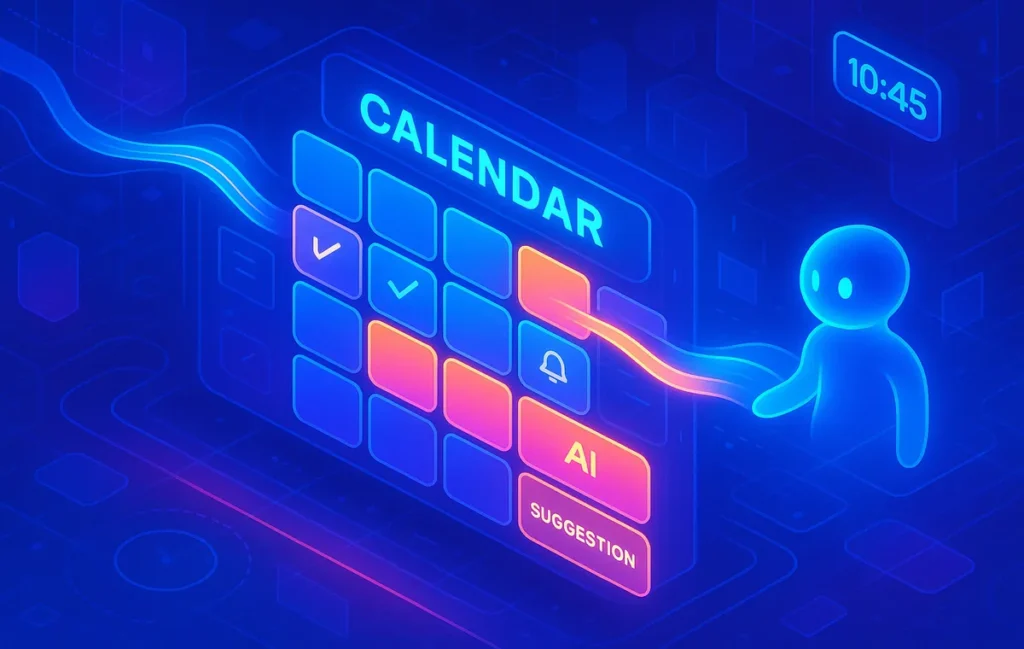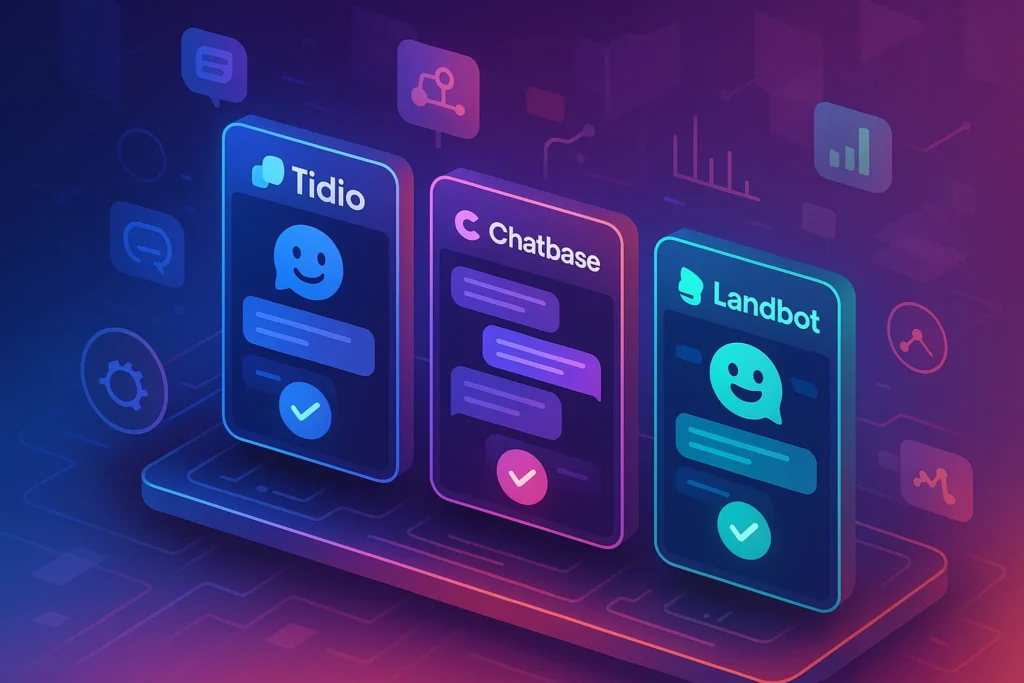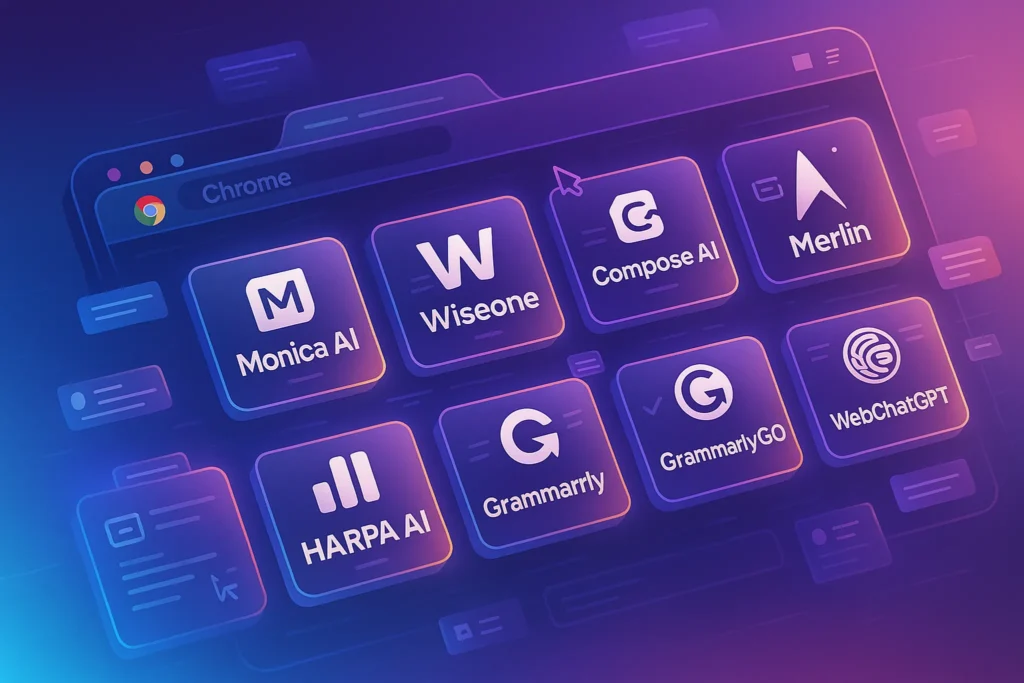⏰ Why AI Calendars Are Essential in 2025
Managing time in 2025 has become both more complex and more critical. Between hybrid work schedules, endless Zoom calls, and digital task overload, the average professional now juggles more than 15 tools daily. Traditional calendars can only display events—they don’t think for you. That’s where AI-powered calendar apps step in.
Unlike static planners, AI calendars analyze your habits, predict your focus windows, and even reschedule tasks automatically when priorities shift. For professionals overwhelmed by decision fatigue, this automation can save hours each week. One tech founder on X put it bluntly: “Switching to an AI calendar was like hiring an executive assistant for $12/month.”
The shift is clear: while Best Smart Calendar Apps for Productivity (+ AI Features) offered a preview, 2025 calendars aren’t just tools—they’re co-pilots for your day.
💡 Nerd Tip: Think of AI calendars as personal project managers. The more data you feed them, the smarter they become at anticipating your needs.
🤖 How AI Transforms Scheduling
AI-powered calendars go beyond reminders. They can:
-
Predict when you’re most productive and block deep work sessions automatically.
-
Reschedule meetings if conflicts arise, even suggesting optimal slots for all attendees.
-
Integrate with task apps to create unified dashboards where deadlines and events sync seamlessly.
-
Provide context-aware nudges like: “You’ve scheduled 6 back-to-back calls; would you like me to insert a 15-minute recharge break?”
Research shows that professionals using AI-assisted scheduling reclaim an average of 5–7 hours per month. That’s almost a full workday saved. Pair this with insights from How AI Can Automate Your To-Do List and Calendar, and the impact compounds further.
💡 Nerd Tip: Don’t ignore the small nudges. A five-minute recovery block can prevent burnout and sustain productivity across the week.
📱 Top AI-Powered Calendar Apps in 2025
🧠 Motion Calendar
Motion has become the go-to AI calendar for busy professionals. It automatically builds your daily agenda by scanning tasks, meetings, and deadlines. If something slips, it instantly reschedules to the next available block. For content creators, pairing Motion with Monday Content Planning: AI Calendar + Task System makes it easy to balance publishing and meetings without chaos.
Users report gaining back up to 2 hours a day just from Motion’s rescheduling logic. As one entrepreneur tweeted: “I stopped wasting brain power deciding what to do next. Motion tells me. I just execute.”
⚡ Reclaim.ai
Reclaim focuses on work-life balance. It creates smart routines, like automatically protecting lunch breaks or scheduling weekly workouts. Its strength lies in flexibility—you tell it your priorities, and it fights to preserve them even when meetings pile up.
In 2025, Reclaim added AI-driven “focus scoring,” which detects your energy peaks and slots deep work accordingly. Compared with traditional scheduling, users reported 15% better project completion rates.
📊 Clara
Clara positions itself as an AI scheduling assistant for teams. It handles email coordination automatically—when someone asks for a meeting, Clara proposes times, manages confirmations, and updates everyone’s calendars without manual input.
This hands-off approach has made it a favorite for startups and agencies. Instead of wasting 10 back-and-forth emails per meeting, Clara turns it into one seamless confirmation.
🌐 Clockwise AI
Clockwise specializes in optimizing team calendars. It looks at the whole organization’s schedules and rearranges meetings to minimize fragmentation. The result is fewer “Swiss cheese” calendars filled with tiny gaps, and more uninterrupted work blocks.
For teams struggling with productivity, this makes a tangible difference. One case study revealed a 23% increase in focus time per employee after switching to Clockwise.
🎯 Trevor AI
Trevor AI is the most task-focused app on this list. It merges your task list with your calendar, dynamically adjusting when priorities shift. If a meeting runs long, Trevor automatically bumps lower-priority tasks to tomorrow without you lifting a finger.
For solopreneurs balancing multiple projects, this prevents overwhelm. As highlighted in Top Productivity Hacks Backed by Science, reducing micro-decisions frees up willpower for actual work.
⚡ Ready to Upgrade Your Calendar?
Try AI calendars like Motion, Reclaim, or Clockwise to transform how you manage time. Save hours each week and focus on work that matters most.
🔍 Choosing the Right AI Calendar for You
Picking the best AI calendar depends on your context. Solo creators may find Motion or Trevor the most effective because of task integration. Teams benefit more from Clockwise or Clara, where coordination efficiency multiplies across members.
💡 Nerd Tip: Don’t overcomplicate your stack. Start with one AI calendar, master its features, and only add another if it solves a specific pain point.
🗓️ 30-Day AI Calendar Adoption Plan
Switching to an AI calendar isn’t just about downloading an app—it’s about building new habits. A 30-day phased approach helps users gradually unlock full value.
-
Week 1: Setup & Sync
Connect your AI calendar to all existing accounts—Google, Outlook, project tools. Don’t overload with tasks yet. Spend this week simply observing how the AI interprets your schedule. -
Week 2: Automated Rescheduling
Enable reschedule automation. Let the AI move non-essential tasks when conflicts arise. Track how often it saves you from manual adjustments. -
Week 3: Task Integration
Now link your to-do lists. Apps like Trevor or Motion will start merging deadlines with meetings. At this stage, you begin to see the system managing priorities for you. -
Week 4: Optimization & Review
Analyze weekly reports. Did you gain focus hours? Did the AI protect your routines? Adjust preferences—like stricter deep work blocks or smarter breaks—for better alignment.
💡 Nerd Tip: Don’t expect perfection in week one. The AI gets better as it learns your rhythms.
⚠️ Failure Scenarios: When AI Gets It Wrong
AI calendars aren’t flawless. Sometimes, rescheduling logic clashes with human nuance. A common scenario: the app may push a “low-priority” client call into late evening hours, not realizing time zones or social expectations. Other times, it may cluster too many focus blocks without factoring mental fatigue.
This is where human oversight remains critical. Treat AI suggestions as drafts, not commands. Review your auto-generated agenda daily for sanity checks. Like in other AI fields, small “hallucinations” happen, and blind trust can create friction instead of relief.
💡 Nerd Tip: Use AI calendars as co-pilots. Let them plan, but keep the veto power in your hands.
📌 Mini Case Study: Freelance Designer Saves 6 Hours
Sophia, a freelance UX designer, used to spend nearly an hour every Monday reorganizing her week. After adopting Motion Calendar in early 2025, she allowed the AI to auto-distribute deadlines and client calls. Within a month, she saved roughly six hours—time she reinvested into deep design sprints.
In her words: “I realized I wasn’t paying for a calendar. I was paying for six extra hours of creative freedom each week.”
Her story echoes research showing AI calendars can reclaim 5–7 hours monthly, as discussed in AI Tools Everyone Should Know. For freelancers, that can be the difference between burnout and growth.
🔮 The Future of AI Calendars: Wearables & Multimodal
Today’s AI calendars live on screens, but the next frontier is integration with wearables and multimodal data. Imagine your smartwatch detecting elevated stress levels and nudging your calendar to insert a meditation break. Or AR glasses projecting your next task in the corner of your vision while you move through meetings.
By 2026, experts predict that biometric feedback will feed directly into scheduling. If your sleep data shows fatigue, your AI calendar might postpone deep work sessions to the afternoon. This blend of health data and scheduling will push productivity into holistic territory—time management that adapts to both tasks and biology.
💡 Nerd Tip: When evaluating calendar apps, look for companies experimenting with wearable integrations—they’re the ones future-proofing their platforms.
📊 Quick Comparison: AI Calendar Apps 2025
| App | Best For | Key Strength | Limitation |
|---|---|---|---|
| Motion | Solopreneurs | Auto-rescheduling & task merging | Can feel rigid for creative workflows |
| Reclaim.ai | Work-life balance seekers | Smart routines & focus scoring | Less powerful for large teams |
| Clara | Agencies/Startups | Handles meeting coordination via email | Limited outside meeting scheduling |
| Clockwise | Teams | Organization-wide optimization | Requires broad adoption to shine |
| Trevor AI | Task-heavy professionals | Dynamic task reshuffling | Fewer collaboration features |
This snapshot helps users align tools with personal or team needs, instead of chasing features they won’t use.
💡 Nerd Tip: Don’t choose the “best” calendar. Choose the one that best matches your workflow and team size.
Want More Smart Productivity Tools?
Join our newsletter to discover AI apps, automation hacks, and next-gen productivity tools—curated weekly for creators and teams.
100% privacy. Just practical insights from NerdChips.
🧠 Nerd Verdict
AI calendars in 2025 aren’t luxuries—they’re productivity lifelines. They reduce cognitive load, optimize collaboration, and transform scattered to-do lists into structured workflows. At NerdChips, we’ve seen professionals recover entire workdays each month by letting AI handle scheduling.
The bottom line: traditional calendars show time. AI calendars give it back to you.
❓ FAQ: Nerds Ask, We Answer
💬 Would You Bite?
Would you trust an AI calendar to fully manage and reschedule your week—or do you prefer keeping manual control?
Share your thoughts. 👇
Crafted by NerdChips for creators and professionals who want time to work on what matters most.



